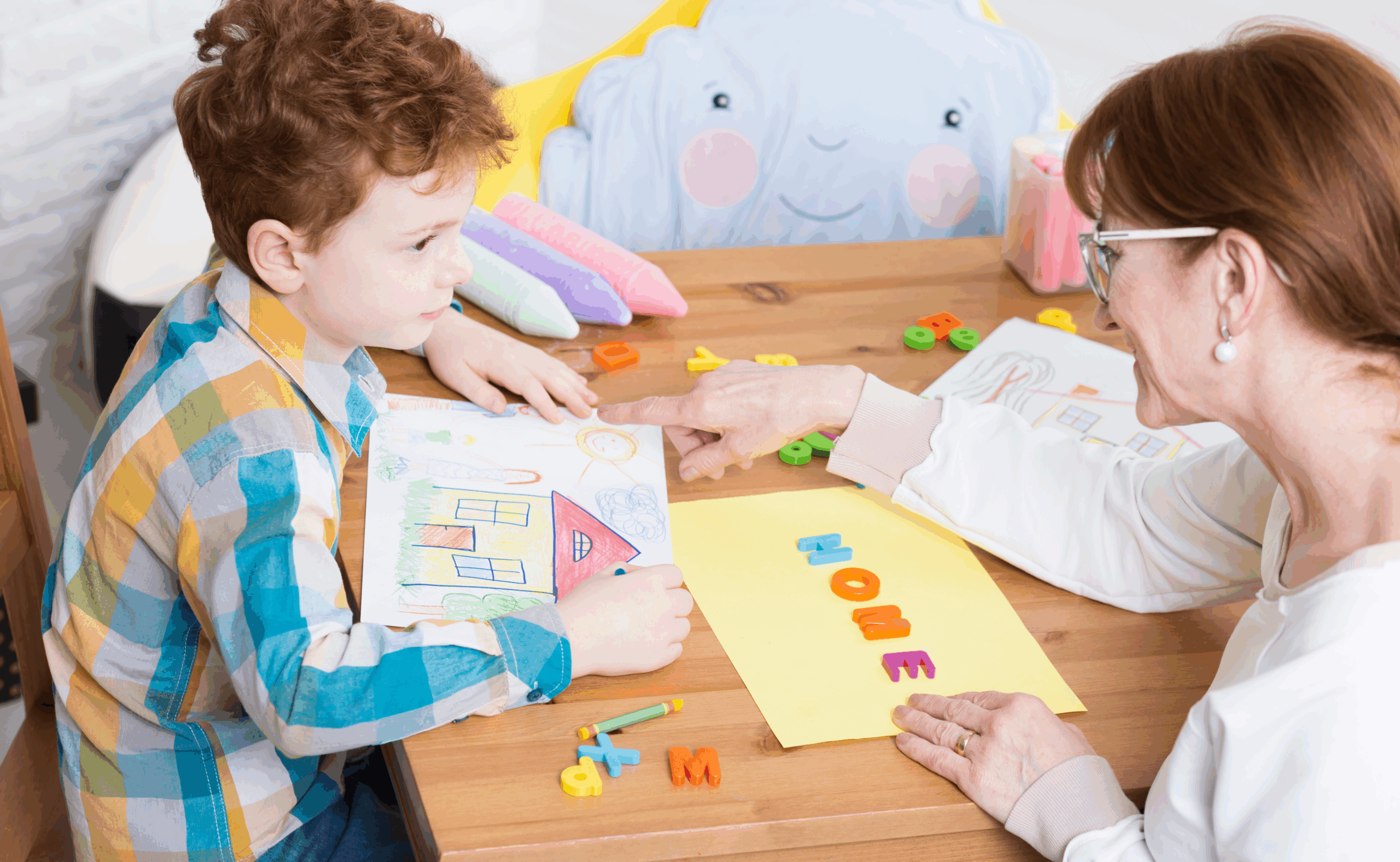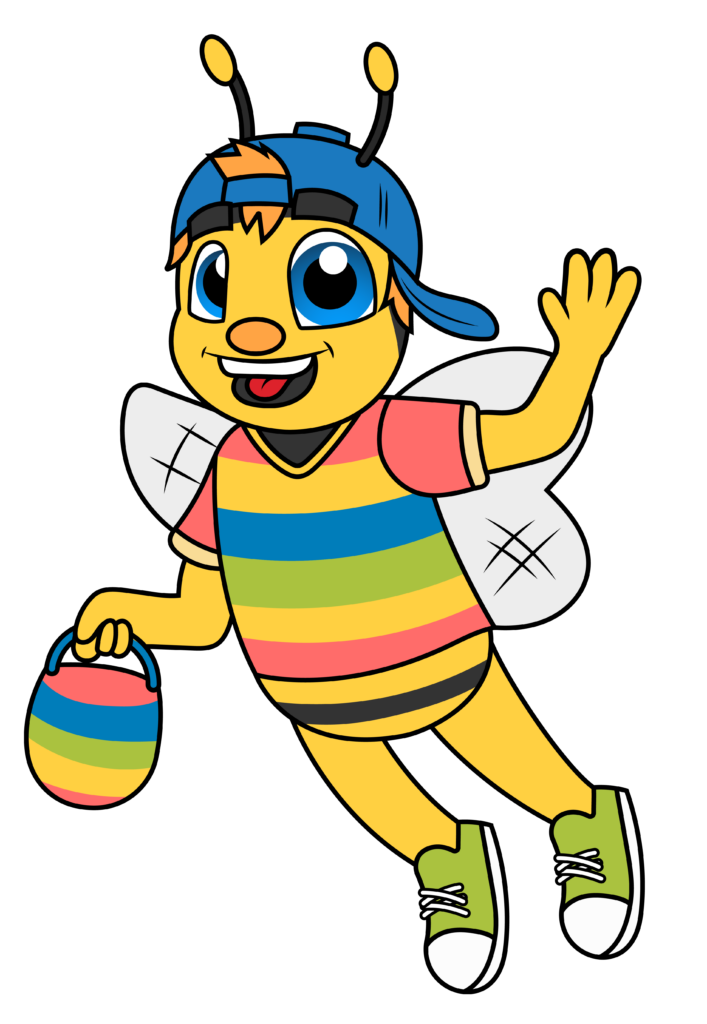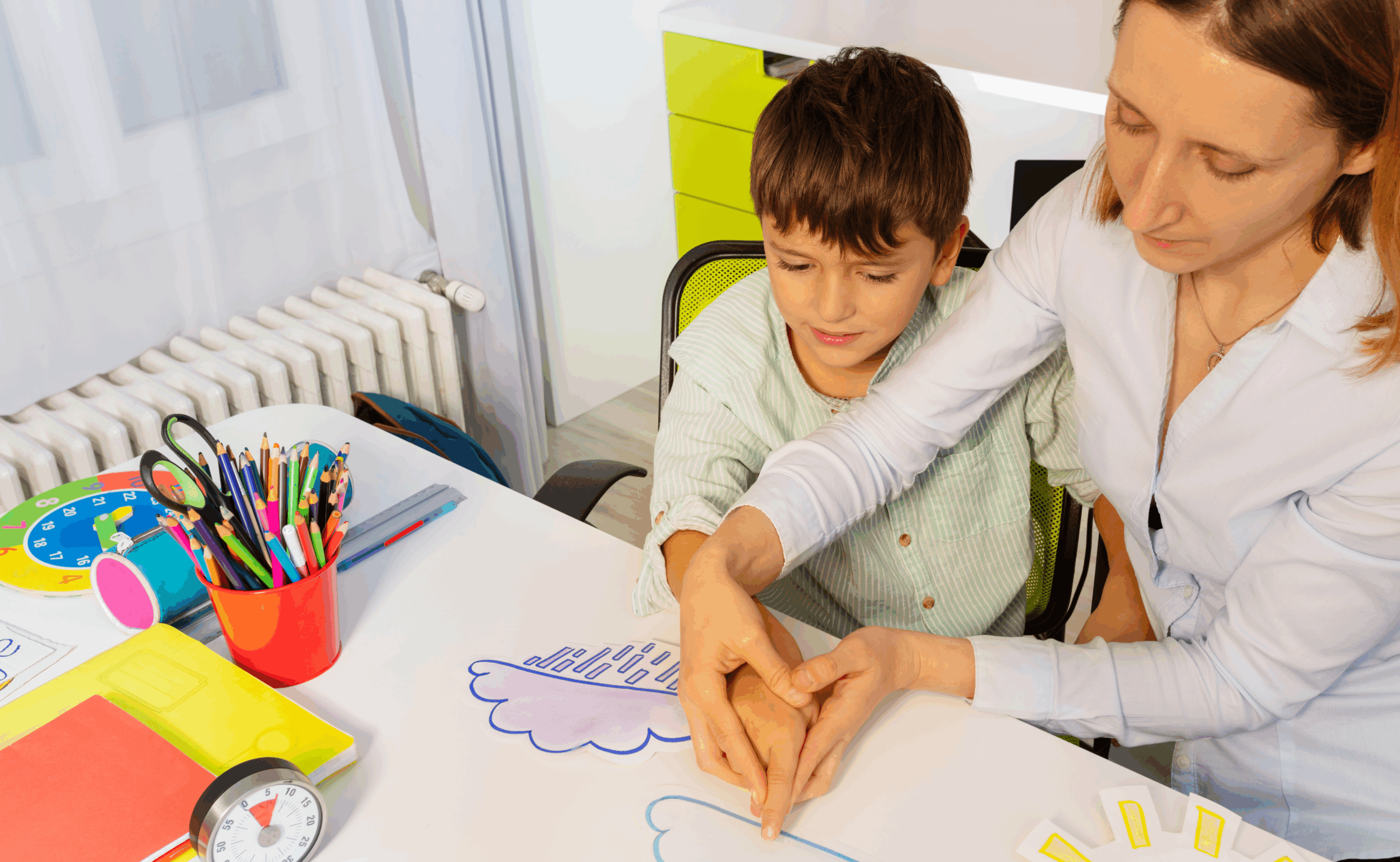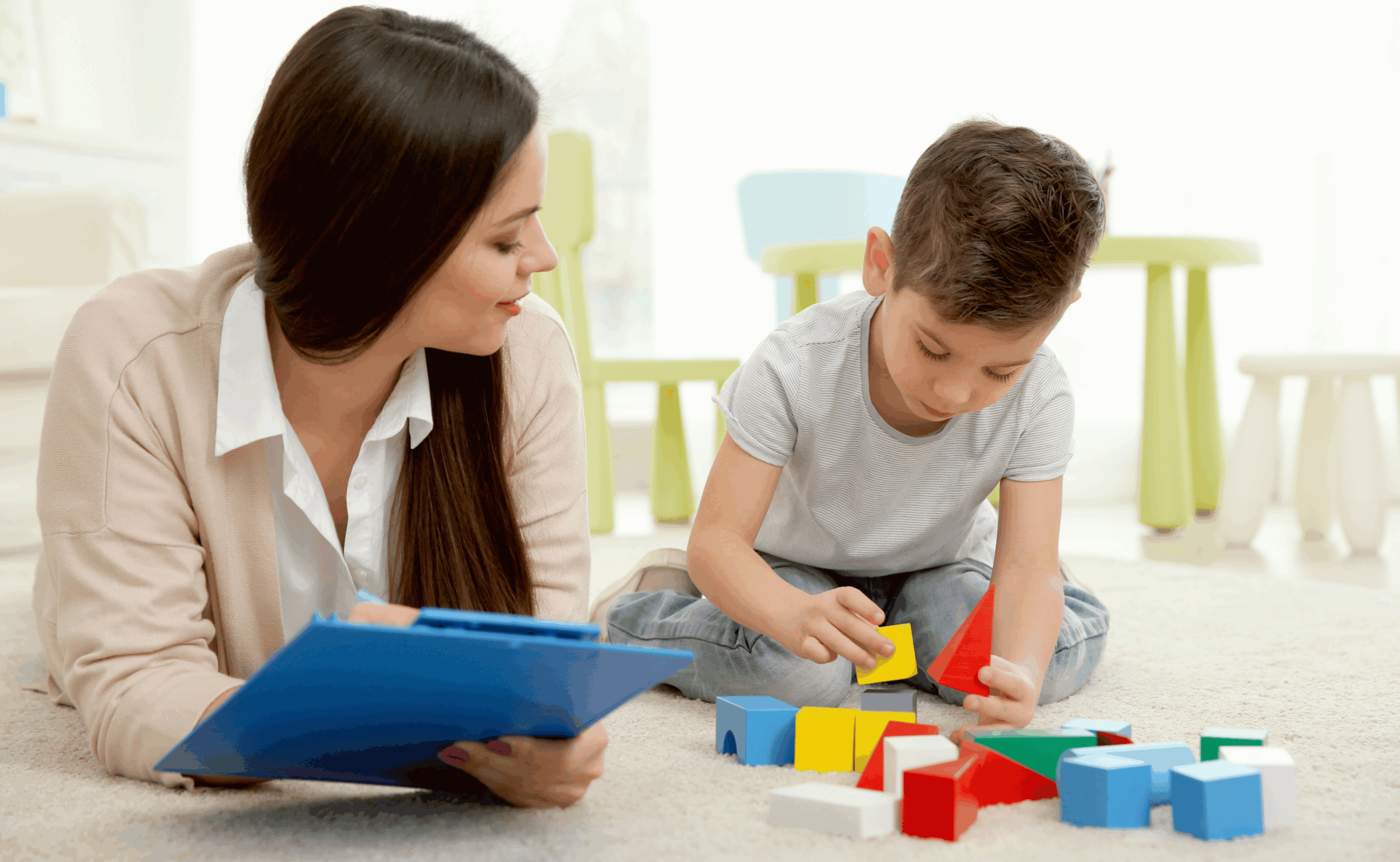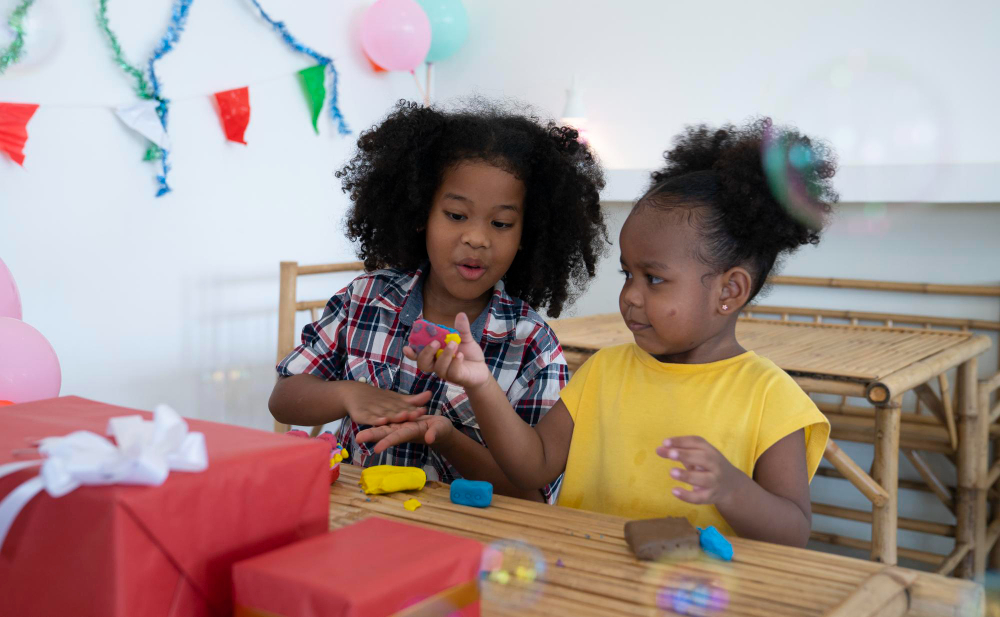Last week, teacher Ms. Rodriguez watched 6-year-old Alex quietly work on a watercolor painting during free time. The normally reserved child had been struggling since his parents’ recent divorce, but something shifted as he swirled blues and grays across the paper. Without saying a word, Alex was processing emotions that he couldn’t yet express verbally. By the time he finished, his shoulders had relaxed, and for the first time in weeks, he was ready to join his classmates at play.
This powerful moment illustrates why creative expression has become such a valuable tool in supporting children’s emotional development. While traditional talk therapy works well for many adults, young children often lack the vocabulary and abstract thinking skills needed to discuss complex feelings. They communicate naturally through play, movement, and artistic creation – making art therapy an ideal bridge between their inner emotional world and healthy expression.
Children today face unprecedented stressors. Academic pressures start earlier, family structures are more complex, and social media creates comparison opportunities that previous generations never experienced. Add in major life events like moving, divorce, illness, or loss, and it becomes clear why so many children struggle with anxiety, behavioral challenges, and emotional regulation difficulties.
The encouraging news is that art therapy activities for kids don’t require expensive equipment or specialized training to be beneficial. Simple, thoughtfully designed creative experiences can provide powerful emotional outlets while supporting healthy development. At Clever Bee Academy, educators have witnessed countless children discover their emotional voices through artistic expression, using creativity as both a coping mechanism and a communication tool.
This comprehensive exploration examines evidence-based approaches to using art therapeutically with children, offering practical activities that parents, teachers, and caregivers can implement immediately. Whether supporting a child through a difficult transition or simply building emotional intelligence and self-awareness, these strategies provide accessible pathways to healing and growth.
Understanding Art Therapy in Early Childhood Development
Art therapy for children operates on fundamentally different principles than adult therapeutic approaches. Young minds process experiences through sensory exploration, visual imagery, and symbolic representation long before they develop sophisticated verbal skills. When a 4-year-old draws a family picture with herself as a tiny figure in the corner, she’s communicating something important about her emotional experience that she might never express in words.
The therapeutic value extends far beyond the final artwork. The process of creating – selecting colors, manipulating materials, making decisions about composition – engages multiple brain regions simultaneously. This integrated activation helps children process traumatic experiences, regulate overwhelming emotions, and develop healthy coping mechanisms that serve them throughout life.
Research consistently demonstrates that creative expression activates the brain’s reward centers while simultaneously calming the stress response system. When children engage in artistic activities, their bodies produce endorphins and reduce cortisol levels, creating natural mood improvements that medication often attempts to achieve artificially. This neurological response explains why many children naturally gravitate toward drawing, painting, or crafting when feeling upset or overwhelmed.
Art therapy proves particularly valuable for children who have experienced trauma, significant life changes, or ongoing stress. Traditional verbal processing requires children to revisit difficult experiences directly, which can sometimes retraumatize or overwhelm developing emotional systems. Artistic expression allows for indirect processing – children can explore feelings of sadness, fear, or confusion through color, shape, and symbol without having to articulate experiences they may not fully understand.
The approach also supports children with various communication challenges, including those with autism spectrum disorders, selective mutism, or language delays. Through art, these children can express complex inner experiences that verbal communication might never capture. A child who struggles with social interaction might create elaborate fantasy worlds through drawing, revealing rich inner lives that surprise and delight the adults in their lives.
Cultural considerations play an important role in therapeutic art approaches. Different cultures have varying relationships with emotional expression, family dynamics, and artistic traditions. Effective art therapy activities for kids honor these differences while providing safe spaces for authentic expression regardless of cultural background.
Age-Appropriate Art Therapy Activities for Kids by Development Stage
Toddlers and Preschoolers: Foundation Building Through Sensory Expression
The earliest years offer unique opportunities for therapeutic art experiences because young children haven’t yet developed adult inhibitions about “good” or “bad” art. Their natural inclination toward sensory exploration makes them ideal candidates for therapeutic creative activities that emphasize process over product.
Finger painting serves as one of the most accessible entry points into therapeutic art for young children. The direct contact between skin and paint provides sensory regulation benefits while allowing for emotional expression through color choice and movement patterns. Children working through grief might gravitate toward darker colors, while those processing excitement or joy often choose bright, vibrant hues. The key lies in adult observation without interpretation – noting patterns without assigning meaning allows children to maintain ownership of their emotional expression.
Clay and playdough activities offer three-dimensional emotional outlets that particularly benefit children who need to physically manipulate their environment to feel secure. The resistance provided by these materials offers proprioceptive input that can be naturally calming for anxious or hyperactive children. Some children pound clay when angry, others smooth it when seeking comfort, and still others create elaborate sculptures that tell stories they can’t yet verbalize.
Texture collages using various materials like sandpaper, cotton balls, fabric scraps, and natural items provide rich sensory experiences while building emotional vocabulary. Children learn to associate physical sensations with emotional states – rough textures might represent angry feelings while soft materials could symbolize comfort or love. These activities build the foundation for later abstract emotional understanding.
Simple storytelling through art allows preschoolers to process family dynamics, social relationships, and personal experiences in safe, controllable ways. “All About Me” books where children draw pictures of their families, homes, pets, and favorite activities provide valuable insights into their emotional worlds while building positive self-identity. Family drawings often reveal children’s perceptions of power dynamics, emotional connections, and security levels within their household systems.
Color emotion activities help young children begin connecting internal feelings with external expression. Creating feeling color wheels where children associate different hues with various emotions builds emotional intelligence while providing a non-threatening way to discuss difficult feelings. A child might choose red for angry, blue for sad, and yellow for happy, creating a personal emotional vocabulary that adults can reference during challenging moments.
Early Elementary: Expanding Emotional Vocabulary
As children enter elementary school, their cognitive development allows for more complex therapeutic art activities that build on earlier sensory foundations while incorporating emerging abstract thinking skills. This developmental stage proves crucial for establishing healthy emotional regulation patterns that will serve children throughout their academic careers.
Emotion identification projects become more sophisticated during these years, often incorporating elements of dramatic play and storytelling. Creating feeling masks allows children to literally try on different emotional states while maintaining the safety of knowing they can remove them at will. Children might create angry masks with bold colors and sharp edges, or sad masks with drooping features and muted tones, then use these props to act out scenarios or simply explore how different emotions feel in their bodies.
Emotion journals combining writing and illustration help bridge the gap between artistic expression and verbal processing. Children who struggle to articulate their feelings verbally often find success in drawing their emotions first, then adding words to describe what they’ve created. These journals become valuable tools for tracking emotional patterns, celebrating growth, and identifying triggers that might require additional support.
Weather and emotion connections provide concrete metaphors that help children understand the temporary nature of difficult feelings. Drawing storms to represent anger, sunshine for happiness, or clouds for confusion helps children understand that emotions, like weather, naturally change over time. This metaphorical thinking proves particularly helpful for children who tend toward perfectionism or those who get stuck in negative emotional states.
Narrative art therapy activities allow children to explore challenging situations through story creation rather than direct personal sharing. Comic strip formats where children create characters facing similar challenges to their own provide safe distance while enabling problem-solving practice. A child dealing with bullying might create a superhero character who faces similar challenges, exploring various solutions through artistic narrative.
Group therapeutic art activities support social-emotional development while building community connections. Collaborative murals where each child contributes elements teach cooperation, compromise, and appreciation for diverse perspectives. These projects often become treasured classroom or family displays that remind children of their ability to work together and create something beautiful through combined efforts.
Late Elementary: Advanced Emotional Processing
Older elementary children possess the cognitive sophistication needed for more abstract therapeutic art approaches that prepare them for the increased emotional complexity they’ll face in adolescence. These activities focus on building self-awareness, emotional regulation skills, and healthy relationship patterns.
Abstract emotion expression through color theory and symbolic representation allows children to explore complex feelings that resist simple categorization. A child processing grief might create layered paintings that move from dark, heavy colors at the bottom to lighter, more hopeful hues toward the top, representing their journey through loss toward healing. These abstract approaches often capture emotional nuances that realistic drawings cannot convey.
Self-reflection art projects help children develop healthy identity formation during this crucial developmental period. Self-portrait evolution activities where children create multiple self-representations over time help them track personal growth while maintaining positive self-regard during periods of rapid change. Goal visualization artwork allows children to imagine and work toward positive futures while building motivation and hope.
Strength and challenge representation activities help children develop balanced self-awareness that acknowledges both capabilities and growth areas. Children might create personal coat of arms featuring symbols representing their strengths, or design bridges representing their journey from current challenges toward future goals. These activities build resilience while maintaining realistic self-assessment.
Social-emotional learning integration through art provides practice with complex interpersonal skills that become increasingly important during these years. Empathy-building exercises might involve creating artwork from another person’s perspective, while conflict resolution activities could include collaborative problem-solving through creative expression.
Therapeutic Art Techniques and Materials
Success with art therapy activities for kids depends largely on having appropriate materials and techniques that match children’s developmental needs while supporting therapeutic goals. The most effective supplies prioritize safety, accessibility, and sensory appeal over expensive or specialized equipment.
Essential materials for younger children include washable paints, large brushes, oversized paper, and non-toxic clay or playdough. Finger paints should be easily washable and hypoallergenic, while paintbrushes need large handles that accommodate developing fine motor skills. Paper should be large enough to allow for broad movements and emotional expression without constraints.
Older children benefit from expanded material options including watercolors, colored pencils, markers, collage materials, and various textures. However, the focus should remain on expression rather than artistic technique. Professional-quality supplies aren’t necessary and may actually inhibit expression by creating pressure for polished results.
Sensory-friendly alternatives accommodate children with processing differences or sensitivities. Some children who dislike the texture of finger paint might prefer brush painting or stamping activities. Others who are sensitive to strong smells might need odorless materials. Having multiple options ensures that all children can participate comfortably.
Creating therapeutic art spaces involves more than just gathering supplies. The physical environment should feel safe, contained, and accepting of messiness. Tables should be easy to clean, storage should be accessible to children, and lighting should be warm and inviting. Most importantly, the space should feel emotionally safe – a place where authentic expression is welcomed and celebrated.
The scribble technique, developed by art therapy pioneers, provides valuable emotional release for children of all ages. Children begin by making random marks or scribbles, then look for images or patterns within their markings. This approach reduces performance anxiety while often revealing unconscious thoughts or feelings that surprise both children and observing adults.
Mandala creation offers structured opportunities for focus and emotional regulation. Children can create circular designs using various materials, often finding the repetitive, contained nature of mandala work naturally calming. The circular boundary provides security while the internal space allows for creative freedom.
Documentation practices should focus on process observations rather than product analysis. Adults might note the child’s emotional state before, during, and after creating, materials chosen, colors selected, or comments made during the activity. This information proves more valuable than attempting to interpret the symbolic meaning of finished artwork.
Addressing Specific Emotional Challenges Through Art
Different emotional challenges respond to specific artistic approaches, though individual children may gravitate toward unexpected techniques that meet their unique needs. Understanding these connections helps adults offer appropriate materials and activities while remaining flexible about children’s personal preferences.
Anxiety and stress management benefit from calming artistic techniques that activate the parasympathetic nervous system. Watercolor activities where children watch colors blend and flow often provide natural relaxation benefits. The unpredictable nature of watercolors teaches acceptance of uncertainty while creating beautiful, uncontrollable effects that reduce perfectionist tendencies.
Breathing exercise integration with art creation provides dual benefits of artistic expression and anxiety management skill building. Children might paint to the rhythm of their breathing, create artwork that expands and contracts like lungs, or use art materials while practicing specific breathing techniques. These combined approaches help children associate creative time with emotional regulation.
Processing grief and loss through art allows children to maintain connection with deceased loved ones, pets, or previous life circumstances while gradually accepting change. Memory book creation helps children organize positive memories while acknowledging sadness about loss. Symbolic representation activities might involve creating artwork that represents the continuing presence of lost loved ones or the growth that can emerge from difficult experiences.
Healing heart projects allow children to externalize emotional pain while visualizing recovery. Children might draw broken hearts that gradually mend through series of artworks, or create heart collages that include both painful and healing elements. These activities normalize the grief process while building hope for emotional recovery.
Anger and frustration management through art provides safe outlets for intense emotions that might otherwise be expressed destructively. Providing appropriate materials for vigorous artistic expression – such as clay for pounding or large paper for bold strokes – allows children to discharge emotional energy safely while creating something meaningful.
Transformation art activities help children understand that difficult emotions can become sources of strength or beauty. Children might begin with artwork representing their anger, then gradually transform it into something positive through additional layers, colors, or elements. These activities teach emotional regulation while building resilience and hope.
The Role of Adults in Facilitating Art Therapy Activities for Kids
Adults play crucial roles in therapeutic art experiences, but their involvement requires careful balance between support and interference. The most effective adult facilitators create safe spaces for authentic expression while avoiding the temptation to guide, interpret, or improve children’s creative work.
Creating emotionally safe spaces involves more than physical safety considerations. Children need to feel that their artistic expressions will be accepted without judgment, criticism, or unwanted interpretation. This means adults must examine their own reactions to children’s artwork, especially when images seem disturbing, unusual, or different from expected norms.
Non-judgmental observation requires adults to notice and appreciate children’s creative processes without imposing adult meanings or concerns. A child who consistently uses dark colors isn’t necessarily depressed – they might simply prefer those hues or be exploring contrast and intensity. Adults should observe patterns over time rather than making immediate assumptions about single artistic expressions.
Appropriate adult responses focus on process rather than product, effort rather than outcome, and the child’s experience rather than adult interpretations. Comments like “I notice you chose lots of blue today” or “You worked very concentrately on that project” acknowledge the child’s experience without imposing judgment or meaning.
Reflective listening during art creation involves paying attention to children’s spontaneous comments, questions, or stories that emerge during creative time. These natural expressions often provide more insight into children’s emotional states than the finished artwork itself. Adults should listen attentively while continuing to honor the child’s ownership of their creative expression.
Knowing when to seek professional help becomes important when children’s artistic expressions consistently include disturbing themes, when art activities seem to increase rather than decrease emotional distress, or when children’s emotional challenges exceed typical developmental expectations. Licensed art therapists possess specialized training in recognizing concerning patterns while using artistic expression therapeutically.
Integrating Art Therapy into Educational Settings
Schools provide ideal environments for implementing therapeutic art approaches because they serve children during their most formative developmental years while reaching those who might not otherwise access mental health support. However, integration requires thoughtful planning that respects educational goals while supporting emotional wellness.
Daily therapeutic art integration can happen through simple modifications to existing activities rather than requiring completely new programs. Morning check-ins might include brief artistic expression opportunities where children show their emotional state through color choice or simple drawings. Transition times between academic subjects can include brief creative activities that help children regulate emotions and refocus attention.
Curriculum-connected healing activities serve dual purposes by supporting academic learning while providing therapeutic benefits. Social studies lessons about different cultures might include art projects that help children explore their own cultural identities. Science lessons about weather patterns could incorporate emotion-weather metaphors that build emotional vocabulary while reinforcing academic concepts.
Behavior management through creativity offers positive alternatives to traditional disciplinary approaches. Children who struggle with emotional regulation might benefit from brief art activities that help them calm down and refocus rather than removal from classroom environments. These approaches teach valuable coping skills while maintaining educational engagement.
Teacher training and support proves essential for successful implementation. Educators need to understand the difference between art education and therapeutic art approaches, recognize when children might benefit from additional mental health support, and feel comfortable facilitating creative expression without feeling responsible for therapeutic interpretation.
Creating trauma-informed art spaces requires understanding how past experiences might affect children’s responses to creative activities. Some children who have experienced abuse might be triggered by certain materials, while others who have lived in chaotic environments might need extra structure and predictability in creative activities.
Common Mistakes to Avoid in Art Therapy Activities for Kids
Well-meaning adults sometimes inadvertently undermine the therapeutic potential of artistic activities through approaches that seem supportive but actually create pressure or anxiety. Understanding these common pitfalls helps ensure that creative experiences remain genuinely helpful rather than stressful.
Over-interpretation represents one of the most frequent mistakes adults make when children create artwork. While it’s natural to look for meaning in children’s artistic expressions, imposing adult interpretations can shut down authentic communication and make children self-conscious about their creative choices. A child who draws a house with no door isn’t necessarily feeling isolated – they might simply have forgotten to include it or preferred the aesthetic without it.
Adult projection often occurs when grown-ups see their own concerns or experiences reflected in children’s artwork. A parent going through divorce might interpret their child’s family drawings as expressions of family conflict when the child is simply depicting a normal moment of family life. Maintaining awareness of personal biases helps adults respond more appropriately to children’s creative expressions.
Rushing the therapeutic process undermines the natural healing timeline that varies significantly between individuals. Some children process experiences quickly through art, while others need extended time to explore complex emotions safely. Adults who push for immediate emotional breakthroughs or expect linear progress may inadvertently create pressure that inhibits authentic expression.
Inappropriate material choices can limit therapeutic potential or create safety concerns. Very young children need larger, safer materials that accommodate their developmental abilities, while older children might benefit from more sophisticated options that match their cognitive complexity. Cultural sensitivity in material selection ensures that all children feel welcomed and represented.
Focusing on product over process represents perhaps the most counterproductive approach to therapeutic art. When adults emphasize the appearance of finished artwork rather than the child’s experience during creation, they shift focus away from emotional processing toward performance anxiety. This completely undermines the therapeutic purpose of creative expression.
Measuring Progress and Success
Evaluating the effectiveness of art therapy activities for kids requires looking beyond obvious indicators like improved artwork quality or increased participation. The most meaningful progress often appears in subtle behavioral changes, improved emotional regulation, and enhanced communication skills that develop gradually over time.
Observable therapeutic indicators might include increased willingness to try new activities, improved tolerance for frustration when creative projects don’t go as planned, or greater ability to discuss emotions and experiences verbally. Children might also show improved social skills, decreased anxiety symptoms, or better sleep patterns as they develop healthier emotional processing abilities.
Emotional regulation improvements often manifest in children’s ability to manage disappointment, transition between activities more smoothly, or use creative activities independently when feeling upset. These changes indicate that children are internalizing coping strategies rather than relying entirely on adult intervention for emotional support.
Communication and expression changes might involve increased verbal sharing about feelings, greater willingness to discuss problems with trusted adults, or improved ability to express needs and preferences clearly. Some children who initially struggled to communicate verbally might begin using their artwork as conversation starters about their inner experiences.
Portfolio progression analysis involves looking at artwork created over time to identify patterns, themes, or changes that indicate emotional growth. However, this analysis should focus on the child’s own developmental trajectory rather than comparison with other children or external standards. A child whose early artwork was consistently dark and chaotic might gradually show more organization, color variety, or positive themes.
Family and educator feedback systems help track progress across different environments while ensuring consistency in support approaches. Regular communication between parents and teachers about children’s emotional responses to creative activities helps identify successful strategies while addressing ongoing challenges collaboratively.
Long-term therapeutic outcomes focus on children’s developing capacity for emotional resilience, healthy relationship formation, and adaptive coping strategies that serve them beyond childhood. Children who benefit from therapeutic art experiences often show increased creativity, improved problem-solving abilities, and greater emotional intelligence throughout their development.
Professional Resources and Training
While many beneficial art therapy activities for kids can be implemented by parents and educators, understanding when professional support becomes necessary ensures that children receive appropriate levels of care for their individual needs. Licensed art therapists possess specialized training that enables them to work with complex emotional challenges that exceed typical developmental concerns.
Finding qualified art therapy professionals involves verifying credentials through professional organizations like the Art Therapy Credentials Board. Licensed art therapists complete graduate-level training in both artistic techniques and mental health principles, ensuring competency in addressing serious emotional challenges while maintaining therapeutic boundaries.
Professional consultation becomes important when children’s artistic expressions consistently include disturbing themes, when creative activities seem to increase emotional distress rather than providing relief, or when children’s emotional challenges significantly impair their daily functioning. Early intervention through professional support often prevents more serious mental health difficulties from developing.
Training opportunities for educators and parents help build community capacity for supporting children’s emotional wellness through creative approaches. Workshops, online courses, and professional development programs provide valuable knowledge while maintaining appropriate boundaries between educational support and professional therapy.
Community partnerships between schools, mental health organizations, and arts programs create comprehensive support networks that benefit all children. These collaborations often provide resources, training, and direct services that individual institutions couldn’t offer independently.
Success Stories and Real-World Impact
The power of creative expression in supporting children’s emotional development becomes most apparent through real examples of transformation and growth. While protecting confidentiality, sharing general success patterns helps parents and educators understand the potential impact of thoughtful therapeutic art implementation.
One common success pattern involves children who initially struggle with emotional regulation gradually developing independence in managing difficult feelings through creative expression. A child who once had daily meltdowns might learn to use brief art activities to calm down and communicate their needs more effectively.
Academic improvements often accompany emotional growth as children who feel emotionally supported become more available for learning. Children whose anxiety previously interfered with school performance might show improved focus and participation as they develop better emotional management skills through regular creative expression opportunities.
Social relationship improvements frequently result from increased self-awareness and emotional vocabulary development. Children who participate in therapeutic art activities often become more empathetic, better communicators, and more confident in forming friendships with peers.
Family relationship enhancements occur when children develop healthier ways to express needs and emotions while parents learn to support their children’s emotional development through creative activities. Families often report improved communication and reduced conflict as everyone develops better emotional awareness and expression skills.
At Clever Bee Academy, educators consistently observe how integrated creative approaches support children’s overall development. Their Play & Learn curriculum recognizes that emotional wellness forms the foundation for all other learning, incorporating therapeutic art principles throughout daily activities rather than treating emotional support as separate from education.
Building Emotional Resilience Through Creative Expression
The ultimate goal of implementing art therapy activities for kids extends beyond addressing immediate emotional challenges to building lifelong resilience and emotional intelligence. Children who learn to process experiences through creative expression develop valuable skills that serve them throughout their development and into adulthood.
Creative problem-solving abilities developed through artistic expression transfer to academic, social, and personal challenges throughout life. Children who learn to approach blank paper with curiosity rather than anxiety often apply similar attitudes to new experiences and unfamiliar situations.
Emotional vocabulary building through artistic expression provides children with internal resources for understanding and communicating complex feelings. These communication skills prove invaluable in forming healthy relationships, advocating for personal needs, and navigating social challenges throughout development.
Self-awareness and identity development supported through creative expression helps children understand their unique strengths, interests, and perspectives while appreciating diversity in others. This foundation supports healthy identity formation during adolescence and young adulthood.
The therapeutic benefits of creative expression don’t require professional therapy settings to be effective. Simple, consistent opportunities for authentic artistic expression within families, schools, and communities can provide powerful support for children’s emotional development while building stronger, more connected relationships between children and the important adults in their lives.
Ready to support your child’s emotional wellness through the power of creative expression? At Clever Bee Academy, experienced educators have been integrating therapeutic art approaches into child development for over 20 years across their 14 Ohio locations. Their Play & Learn curriculum recognizes that children process emotions and experiences through multiple channels, including the powerful medium of artistic expression.
During your personalized tour, discover how Clever Bee Academy creates safe, supportive environments where children can explore their feelings, build emotional vocabulary, and develop healthy coping strategies through age-appropriate art therapy activities for kids. Their experienced teachers understand that emotional wellness forms the foundation for all learning and growth, incorporating creative expression naturally into daily routines rather than treating it as an add-on activity.
See firsthand how their comprehensive approach combines educational excellence with emotional support, helping children develop both academic skills and emotional resilience. From infant care through school-age programs, Clever Bee Academy nurtures the whole child through research-based practices, genuine care, and deep understanding of child development principles.
Their educators recognize that every child brings unique experiences, strengths, and challenges that deserve individual attention and support. Through small class sizes, thoughtful curriculum design, and ongoing professional development, they create environments where children feel safe to express themselves authentically while building the skills they need for lifelong success.
Don’t wait to invest in your child’s emotional health and creative potential. Contact Clever Bee Academy today to schedule a tour and discover how their therapeutic approach to early childhood education can help your child develop emotional strength, creative confidence, and resilience that will serve them throughout their lives. Take the first step toward supporting your child’s complete development in an environment that truly understands the connection between emotional wellness and learning success.

